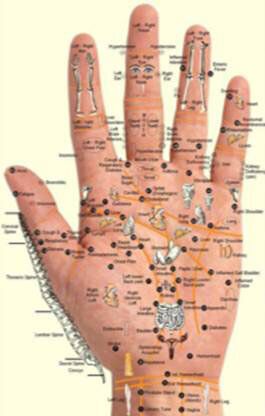
In 2003, I was at the Comdex event in Las Vegas helping Microsoft launch its tablet platform. My team had created an interactive postcard tool that allowed participants to sign a digital postcard photo of themselves and send it to their friends from one of several tablet PCs set up at the event. The idea was to show how cool the stylus pen and the digital ink on the tablet PC was, and how different this was from the previous dependence on the mouse and keyboard. Participants were immediately entered into a sweepstakes to win a tablet. Even Bill Gates came by and had his photo taken and he signed his photo. But the tablet PC never "took" in a way that we all thought it was going to.
Then the iPad came along. Instead of the stylus, the new modality is touch, whether to pinch, scroll or "click."

Touch is a powerful and special thing. I remember as a kid being amazed with the idea of how our fingers had all these nerves in them that felt texture, heat, cold, pain, pleasure, etc., and conveyed all that information back to our brains. Touch connects us to emotion, memory and experience. We all know the blue and pink baby experiments where some babies were touched and nurtured and the others weren't, and the result of those that weren't touched was that they had slower emotional development and difficulties with relationships later on in life. The iPad has put us back into a human sense reference, literally in a way "rescuing the reality from virtual reality." Touch has now defined a whole new generation of computing, and there is no looking back.
For brands, as mentioned in previous blog posts, the consumer touch revolution is moving faster than brands can catch up. In a recent study from the Interactive Advertising Bureau, 45 percent of Fortune 500 companies do not have mobile-optimized websites. In our own research, a full 75 percent do not have what we would deem as mobile-optimized sites.
So how should a brand think about this whole "touch" revolution? There are five easy steps for them to consider for both tablet and smartphone development:
1.Design in a responsive way so it works for all touch formats including tablet and smartphone.
2.Use touch where you want lead people to discovery. Especially on the tablet, still prioritize tasks but realize there is a great opportunity for compelling content that can be discovered by your audience. Whether that's beautiful photography and blog content, video or infographics, the iPad is a beautiful interface for sitting on the couch and touch browsing and discovering. Think about Flipboard as a great example of this experience.
3.Design for the fingertip and even the thumb. Remember that spatial awareness in design is key. If you touch it and it clicks on three other things because you haven't spaced for the fingertip or clunky thumb, then the design has failed.
4.Consider image versus text. Consider the right context for using a visual user flow versus text to continue that emotional connection.
5.Lead with content and float menus. Let your content lead the primary areas of the screen, and use navigation, either top or bottom and allow a tap to bring up the navigation screen.